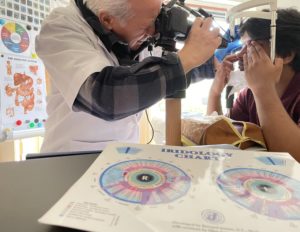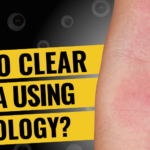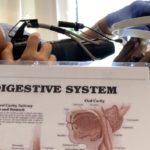How To Treat Diabetes Using Iridology
Diabetes is a disease that occurs when your blood sugar or glucose is too high. Blood sugar or glucose is your main source of energy, which comes from the foods and drinks you consume. A hormone made by the pancreas, called insulin helps glucose from food get into your cells to be used as energy. Genetics plays a huge role in whether you are prone to becoming Diabetic, however when you realise this and change your lifestyle soon enough, you can reverse the odds of your becoming Diabetic.
Do you know you can spot or treat Diabetes with the help of Iridology? Diabetes is a disease whose initial symptoms are often undetectable. As a result, many cases of Diabetes are not detected as early as they could have been. Using the science of Iridology, many potential illnesses can be spotted way in advance before the symptoms arise. Imagine the difference it would make when you have a head start or pre-warning of potential illnesses so you can take immediate actions to prevent or reverse it.
If you or someone you know has got Diabetes type one or type two, you or the person would have been to at least one Medical Doctor or a nurse for a check up. Years ago, Medical Doctors would shine a torch into the patient’s eye, so they are aware of the science of Iridology. They used to examine the eyes to look for signs of jaundice, hyperthyroidism, anemia and even high cholesterol. However, now, they check your blood and other factors to see whether you have got extra sugar. Injections to draw blood for blood tests can be uncomfortable, painful and invasive.
Iridology has been around for over 350 years and it has advanced significantly with the use of special modern cameras. Before these cameras were invented, we would either look at the eye with a torch or a torch with a magnifying glass. With the camera, we get to show the patient immediately after the photos have been taken, what their eyes look like. We can then also clearly explain our findings and which part of the findings relate to the various organs such as the brain, the ears, the skin, the liver, the pancreas, the lungs, the arms, the heart, the legs, the digestive system and so on.
 Iridology is the study of the iris, which is the coloured part of the eye. Sclerology is the study of the sclera, which is the whites of the eye. Our eyes are the depository for 28,000 nerve endings from the body. Your body is always sending signals to the iris and your iris is marked a certain way from genetic markers, as well as current markers on food indiscretions, and so on. The Iridology Chart was designed over the years after the study of over 1 million pairs of eyes.
Iridology is the study of the iris, which is the coloured part of the eye. Sclerology is the study of the sclera, which is the whites of the eye. Our eyes are the depository for 28,000 nerve endings from the body. Your body is always sending signals to the iris and your iris is marked a certain way from genetic markers, as well as current markers on food indiscretions, and so on. The Iridology Chart was designed over the years after the study of over 1 million pairs of eyes.
The right eye reflects the right half of your body and the left eye reflects the left half of your body.
Sadly due to limitations with time in treating each patient, most medical doctors only allocate under 10 minutes per appointment per patient. This means, only one health concern can be addressed per appointment and if one has more than one health concern, separate additional appointments need to be booked in. Due to time constraints, when a person is pre-diabetic or has diabetes, most medical doctors do not even show the patient where their pancreas is or what the function of this organ is. Watch our short video below to learn How to use Iridology to spot Diabetes.
With regards to how to treat Diabetes using Iridology, we can see specific sugar marks in the iris. The thicker the sugar mark, the worse your Diabetes is and we will therefore as you to get a reading to confirm our findings. Many times, when someone has a serious illness, unless they can visualise the seriousness of the illness, there may still not be priority in the person’s mind to make life changing changes to prevent or reverse the illness. With Iridology, once the person sees their own eye photos, there is a higher possibility of them taking their health findings more seriously. By comparing iridology photos over time, we can then monitor the progress and and improvements or deterioration in your Diabetes and recommend adjustments accordingly.
The method used these days to detect Diabetes is by checking the blood. It is not an effective method as it takes time for the blood to be analysed and results of findings provided. Iridology is a faster and non invasive method to analyse the health of our body. Iridology can also tell which other organs, apart from the pancreas needs to be strengthen to treat Diabetes and possibly reverse it.
Diabetes is a disease that occurs because the body cannot produce the hormone insulin or the body cannot use insulin effectively, causing an increase in blood glucose levels in the body. Insulin is a hormone produced by beta cells in the pancreas and serves to transport glucose from the bloodstream to body cells. Contradictory to popular belief, Diabetes is not only caused by weaknesses in the Pancreas. Often, when someone has Diabetes, other major organs such as the Liver, Thyroid, Small Intestines and Large Intestines are affected. By using Iridology, we can pinpoint specific weaknesses is these organs and therefore recommend natural solutions to help strengthen these organs and get these working properly again.
By having follow up photos taken during check-ups, the progress of Diabetes can be more effectively monitored. We would compare the initial eye photos to current photos to monitor progress. As Diabetes is a serious illness which can lead to blindness or amputations, it is important for initial regular check ups say every 4 to 6 weeks so that necessary tweaks to lifestyle changes in food and drink intake, exercise and even mindset can be recommended. This will give a stronger possibility for Diabetes to be managed or even reversed.
Do download our free Best Ways To Treat Diabetes Guide and also check out our 2 Diabetes courses for more guidance on how to deal with Diabetes or prevent it.
Do check out our other related blogs:
Iridology Pictures and Meanings
Can You See Illness In Your Eyes?
NEXT STEPS
Book in a complimentary 15 minutes Zoom call with us (valued at £99) to enable us to clarify questions you may have on a specific health concern.




